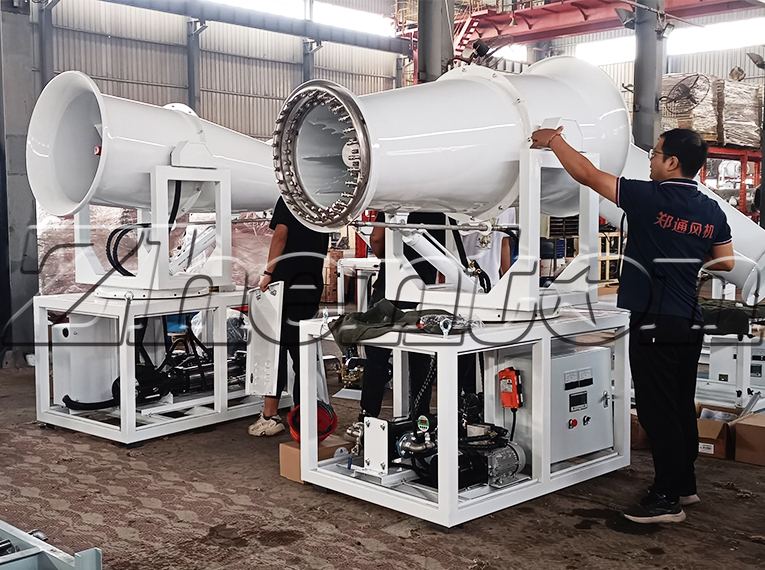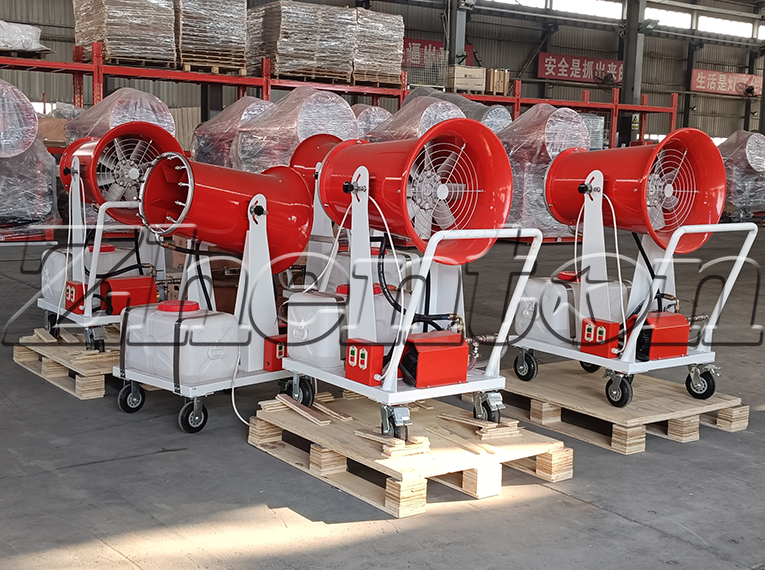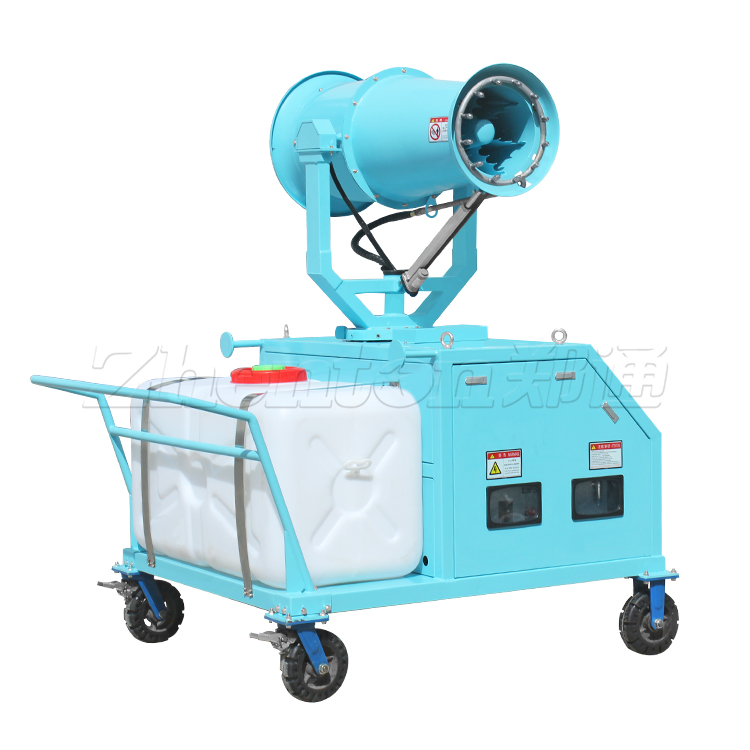Fog cannon, also known as remote fog cannon or spray dust removal equipment, is mainly used for large-scale dust removal, cooling and disinfection and other environmental management work in industry and construction sites. Its working principle is to atomise the water by high-pressure pump, and send the atomised water molecules to a farther place by powerful fan, which combines with the dust particles in the air to make them gain weight and land, so as to achieve the purpose of purifying the air. The volume of the water tank of the fog cannon is usually between 5 cubic metres and 10 cubic metres. The following Zheng Tong fog cannon editorial details for you to introduce the fog cannon water tank volume in different scenarios on the design of the difference.
The volume of the water tank design mainly depends on the use of equipment scenes and needs. For example, some large construction sites or long continuous operation environment may require a larger water tank to reduce the frequency of water supply. The common fog cannon water tank volume is usually between 5 cubic metres and 10 cubic metres. This design can ensure continuous operation while also taking into account the mobility of the equipment and the flexibility of installation.
Water tanks are usually designed from stainless steel, especially 304 or 316 stainless steel, as they have good corrosion resistance. The water tank should not only be able to store enough water, but also ensure that it is not easily damaged and corroded under the action of high-pressure water pumps. In addition, the tank is usually equipped with a water level gauge, overflow and anti-wave plate to ensure the stability of the water level and prevent the water body from the suction of the pump to produce violent fluctuations.
The design of the tank should also take into account the ease of maintenance and water supply. To this end, the tank is usually equipped with access ports, quick couplings and bypass connections. Access port is convenient for personnel to enter the water tank for internal cleaning and maintenance; quick connector makes the water tank and external water connection more convenient and quick; bypass interface allows the pump to take water directly from the outside, so that when the water tank is out of water, it can be quickly replenished from an external water source to ensure that the fog cannon uninterrupted work.
Finally, the installation position and fixing method of the water tank is also an important factor to be considered in the design. As the fog cannon will produce large vibrations during operation, the water tank must be firmly installed on the frame to prevent damage or displacement caused by vibration. At the same time, the location of the water tank should be convenient for daily inspection and maintenance, while also taking into account the aesthetics and coordination of the overall equipment.
In summary, the design of the water tank of the fog cannon should not only consider the volume size, but should also take into account the choice of material, structural design and the convenience of maintenance. These factors work together to ensure that the fog cannon can operate efficiently and stably in a variety of complex environments. When choosing and using a fog cannon, the volume of the water tank and related accessories should be reasonably configured according to the specific application scenarios and needs, so as to maximise the equipment's effectiveness and service life.













